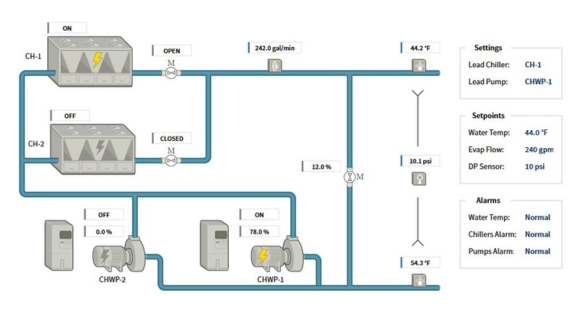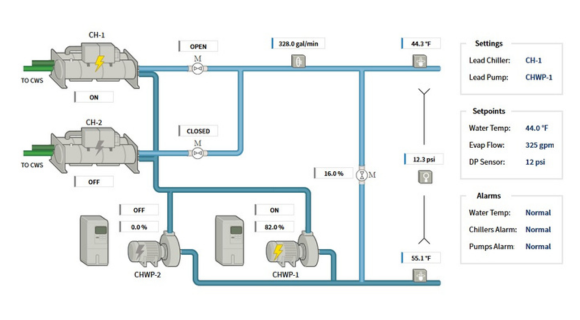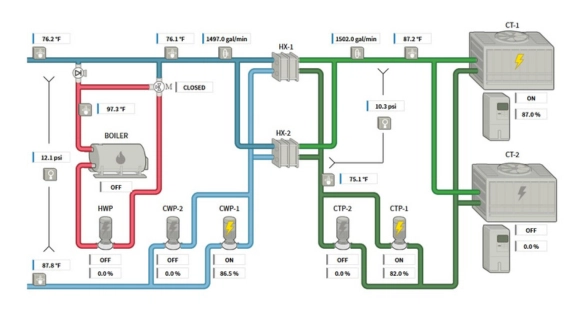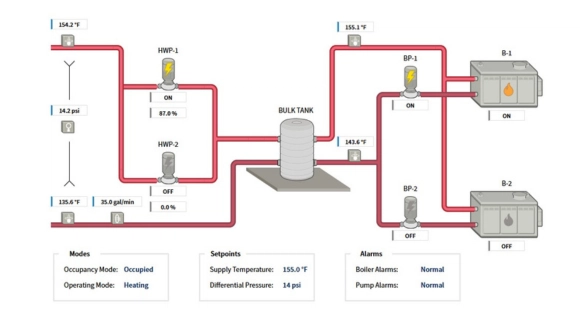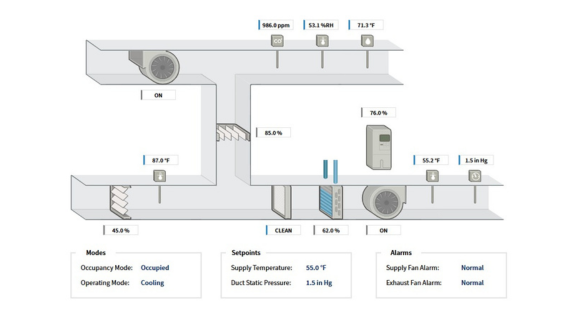Application
VAV (Variable Air Volume) boxes control the amount of conditioned air delivered to individual zones, allowing for localized temperature control in spaces like offices, patient rooms, classrooms, and labs. They modulate airflow based on thermostat demand, ensuring comfort while reducing unnecessary heating or cooling.
Without a clear interface, operators may struggle to detect airflow issues, damper faults, or improper setpoints, resulting in hot/cold complaints, energy waste, and poor occupant satisfaction.
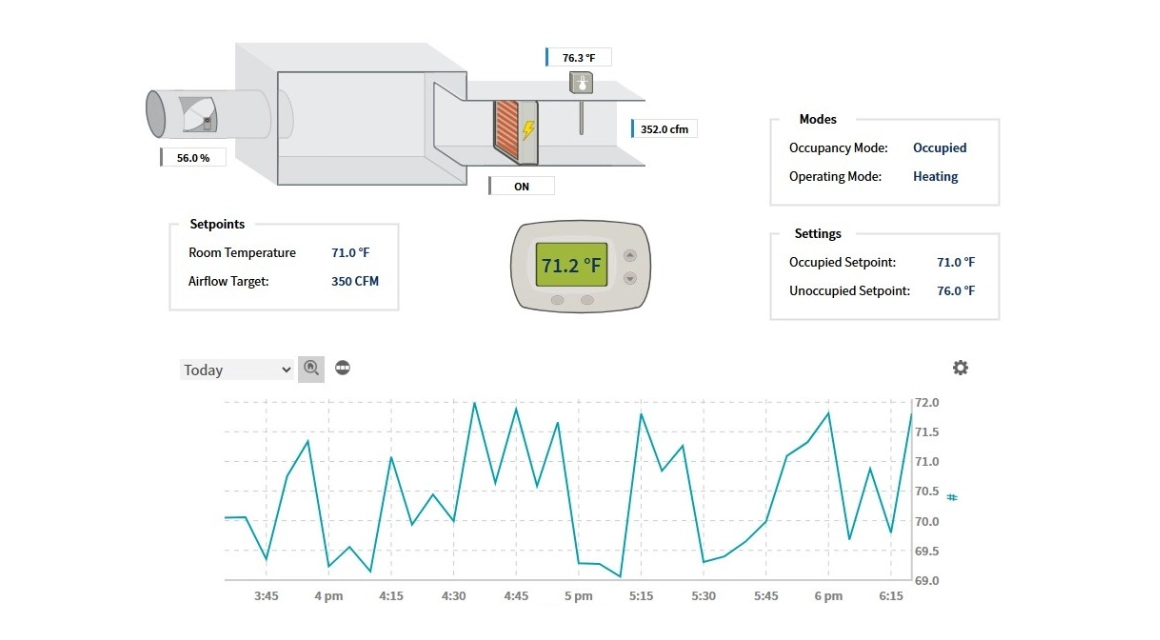
User Interface Benefits
Real-time visibility into zone temperatures and damper positions: This helps operators quickly identify areas that are over- or under-conditioned, minimizing occupant complaints and discomfort.
Remote adjustment of airflow setpoints and modes: Enables faster response to changing occupancy or room use without needing to access ceiling spaces or local controls.
Clear fault and alarm reporting per zone: Detects failed actuators, stuck dampers, or sensor issues early, preventing extended comfort problems and unnecessary service calls.
Takeaways
A user-friendly interface for VAV systems gives operators the tools to ensure consistent comfort, reduce energy consumption, and stay ahead of system issues. With real-time data and remote control, managing zone-level HVAC performance becomes faster, more accurate, and more reliable.
Want to Effectively Monitor and Control your HVAC Systems?
We build HVAC management interfaces that help operators ensure temperature comfort and efficiency.


